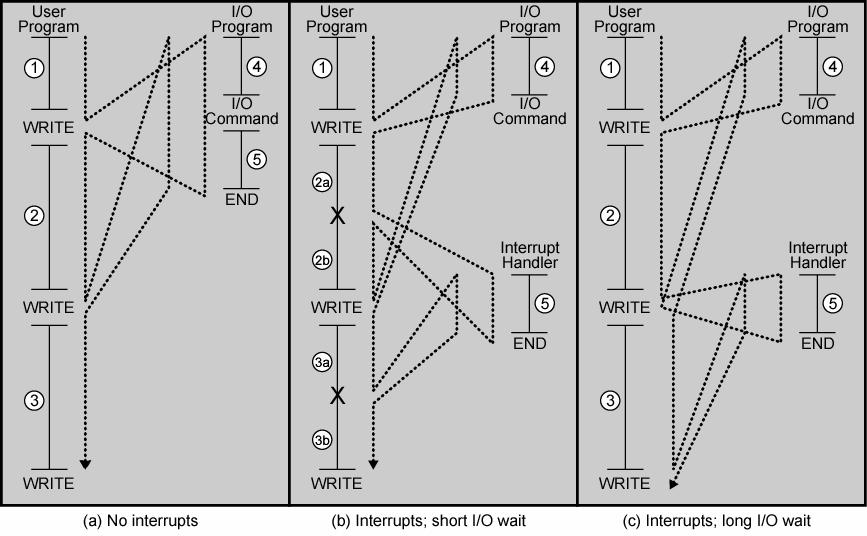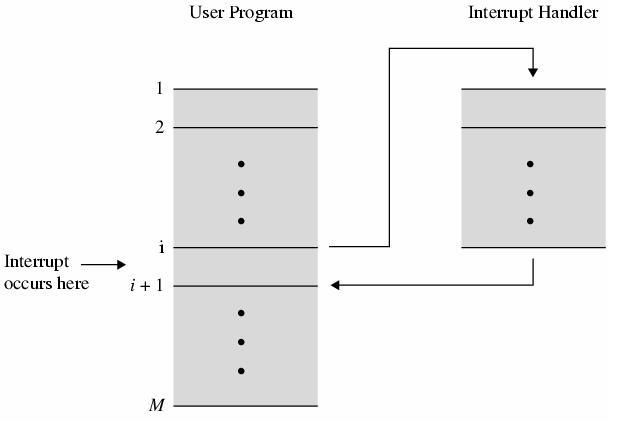| << Chapter < Page | Chapter >> Page > |

Figure 5: Program flow control without and with interrupts
The user program (depicted in figure 5a) performs a series of WRITE calls interleaved with processing. Code segments 1, 2, and 3 refer to sequences of instructions that do not involve I/O. The WRITE calls arc to an I/O program that is a System utility and that will perform the actual I/O operation. The I/O program consists of three sections:
Because the I/O operation may lake a relatively long time to complete. The I/O program is hung up wailing for the operation to complete; hence. The user program is slopped at the point of the WRITE call for some considerable period of time
With interrupts, the processor can be engaged in executing other instructions while an I/O operation is in progress. Consider the flow of control in Figure 5b. As before, the user program reaches a point at which it makes a system call in the form of a WRITE call. The I/O program that is invoked in this case consists only of the preparation code and the actual I/O command. After these few instructions have been executed, control returns to the user program. Meanwhile, the external device is busy accepting data from computer memory and printing it. This I/O operation is conducted concurrently with the execution of instructions in the user program.
When the external device becomes ready to be serviced, that is, when it is ready to accept more data from the processor, the I/O module for that external device sends an interrupt request signal to the processor. The processor responds by suspending operation of the current program, branching off to a program to service that particular I/O device, known as an interrupt handler, and resuming the original execution after the device is serviced. The points at which such interrupts occur are indicated by an asterisk in Figure 5b.
From the point of view of the user program, an interrupt is just that: an interruption of the normal sequence of execution. When the interrupt processing is completed, execution resumes (Figure 6). Thus, the user program does not have to contain any special code to accommodate interrupts; the processor and the operating system are responsible for suspending the user program and then resuming it at the same point.

Figure 6: The transfer of control via interrupt

Notification Switch
Would you like to follow the 'Computer architecture' conversation and receive update notifications?